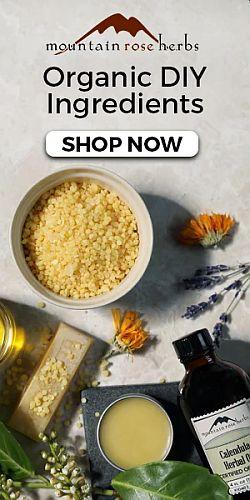
When I first learned that stinging nettles (Urticia diocia) are nutritious and a good remedy for seasonal allergies – I was shocked! Really?! That plant that stings when I walk through it? That one? How on Earth am I supposed to put that in my mouth?
If it’s so good, why did people stop eating it? However, I would learn that many people throughout the world still eat it. Why aren’t people eating it where I live?
It took many conversations and hours of study before I truly believed that his herb wouldn’t harm me. I heard many people recounted stories of grandparents eating this spring green and met others who drank the tea.
I learned that cooked 89 grams (about 1 cup) of nettle has more calcium than a cup of 1% milk (8 ounces/ 236 grams). Nettle has more iron than baby spinach and almost the same amount of protein. I was shocked that this wild plant is nutritious! What a wonderful abundant plant to get to know. It has so many benefits to the body. Why is this information not widely spread? When did we stop using this herb and why?
One of the answers came from realizing my own bias – I assumed that store bought food is the best option with the most nutritional benefits. The lessons I learned from Nettle: 1) just because an herb is not mainstream or popular doesn’t mean it’s not effective. 2) Keep questioning why foraged plants and herbs went out of disfavor.
I remember the first time I tried steamed nettles. It’s so comical to think back about it now! I was sooooo afraid I was going to have an adverse reaction to it.
I took a nibble and swore I felt a tingle on my tongue, but I’m sure it was just my fear. Since I didn’t die or had to rush myself to the hospital with a swollen tongue or burning throat, I decided to try it again. Besides dying from eating nettles, my second fear was having to tell medical professionals that I ate nettles . . . can you imagine the looks on their faces? Now I proudly tell anyone about nettles.
I was surprised how fast nettle decoction relieved my seasonal allergy symptoms. I felt relief within about an hour after drinking the decoction. I tried it again and again. Sure enough my symptoms subsided each time.
How to use stinging nettle
As long as nettle is cooked or dried then the sting goes away, and you are ready to consume it. Some people also pulverize the fresh leaves into a pesto, however I’ve never tried that method. I only consume it dry or cooked.
My favorite way to use nettles is a strong decoction. I use a half an ounce (measured by weight) of dried nettle leaves and pour two cups of boiling water over the top. I cover the container to keep the steam in and let it steep for at least four hours or overnight. It makes a deep green to almost black liquid. I strain the nettle from the water and sometimes add honey or fruit juice. The flavor is akin to cooked spinach.
Nettle can be a diuretic as well. This is the ability to move water out of the body via urine. I don’t notice much of a diuretic effect. I’ve had stronger effects from a cup of coffee, but other people report nettle can cause many trips to the bathroom. If it’s your first time trying nettle tea, start low and go slow which means start with a weaker tea and drink only a fourth to half a cup the first time.
Use the fresh young nettle tops in replace of spinach when called for in a recipe.
Fry the nettle tops until they wilt in some butter, olive oil, or other substitute of your choosing, add a dash of salt, and enjoy.
There are many recipes on the internet.
When to harvest nettle and how
The nettle tops in the Spring are the best! They are tender and usually easier to harvest because of it. The “stingers” of Spring tops are smaller and more supple which reduces the likelihood that they can pierce the skin. Garden gloves will also help protect the skin from the stingers, too.
Since the Spring tops are so close to the soil a good rinse might be in order dislodge any soil that splashes up from rain.
If you’re not going to eat the nettle tops right away, they can be put into a food dehydrator to dry for later use. Set the dehydrator to its lowest setting or about 110 degrees Fahrenheit.
As the nettle gets taller, the stem becomes woody and the leaves space out further apart. I usually stop harvesting nettles after they grow flowers. First of all, the stingers are nasty and the leaves are usually reduced in size.
How to air dry nettle
I cut the tall nettles at a place along the stem where a few leaves will be left behind to continue growing. Then I bundle about three to four stems together, wrap a rubber band around the ends, and hang the bundle upside down to dry in my home. After the leaves are dry, I strip the leaves off into a glass jar.
How to grow or wildcraft nettle
Finding nettle growing wild and harvesting it is called wildcrafting. It’s tempting to want to harvest nettle found on walking trails since it’s so convenient. However, take into consideration dog walkers may also frequent these trails. You know what that means . . . dogs urinating along the way. Consider harvesting above the “pee” line or finding a less frequented area.
Nettles can also be grown in a garden or yard. Though, be prepared to be the Nettle Tamer. It spread very well via underground stems called rhizomes. From my experience they spread the most in Spring. The snow recedes and I suddenly find nettle traveled at least one foot away from its “parent”. The good news is these “runners” are easy to remove. Simply, dig out the new “baby” nettle. Do so carefully so you can find the runner and back track to the main plant. Then, cut the rhizome off near the parent plant. If you just pull the nettle plant out and don’t take the rhizome too, the plant will continue to grow from the new point.
If you’re not looking forward to harvesting your own nettle I suggest Mountain Rose Herbs as a reliable source.
May your nettle hunting and nettle taming be a delightful adventure.
Want more herb lessons to grow your apothecary? I teach live lessons the Sunday before each Full Moon. Details are here.





r6988v
t02xqc
yyxfbr
ps51kj
lmowf5
ohtbfn
uh5qx2
ltgobd
8i3zid
xzqc3l
lawh43
3p1fel
j0f9os
878fxr
5e69pm
7fa6xc
16dd11